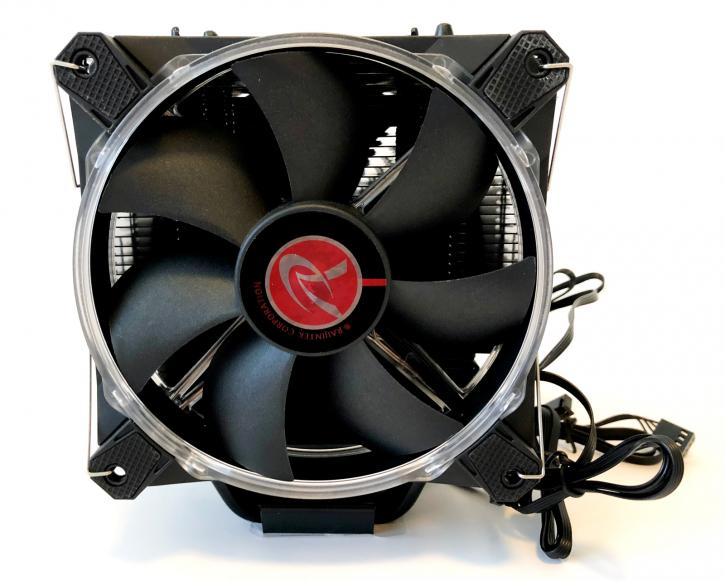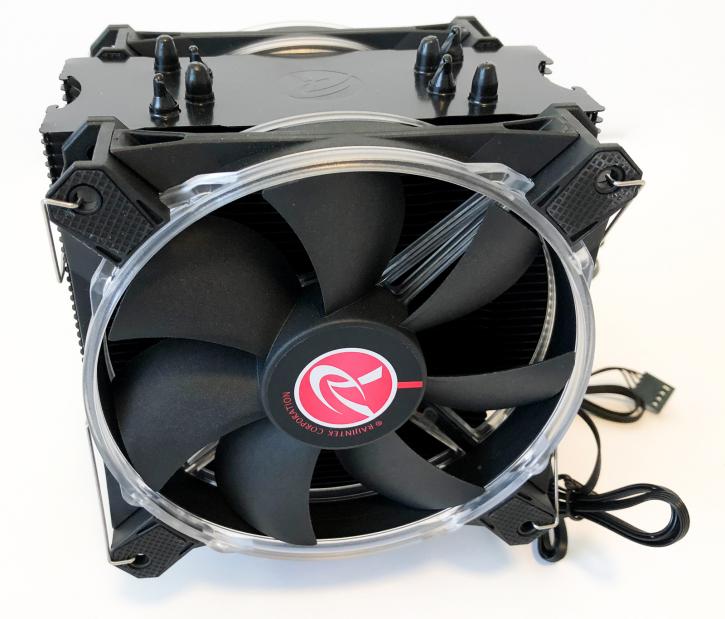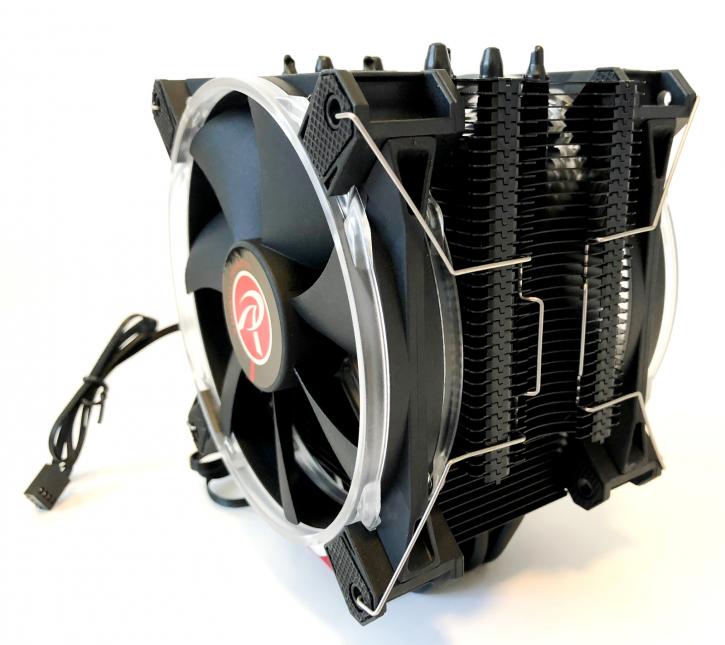Continuing our investigation
A closer look at the... spinny things.
Shall we take a closer look at what makes the Leto Pro do its job? The fans? The ones supplied are Raijintek's own 12025 Macula PWM RGB 120mm units. The specs have already been previously outlined earlier in this article, but they seem to stack up just fine (and perhaps even better) than similarly priced offerings from competing companies. Some may offer higher airflow. Some may be a little louder/quieter. Some offer less pressure, so yet again we have a swings and roundabouts thing.
The fans themselves, powered off, are fairly unremarkable. A total of seven curved blades (which are fairly flat, indicating a more pressure orientated design), a Raijintek logo in the middle, and only the clear circular strip on the back and front of the housing give any indication as to the light show these fans can put out. They have anti-vibration padding, two cables (one for PWM, one for RGB)... and that's it. To be fair, it's a fan on a 30-40 cooler. I am not expecting Corsair LL levels of bling here.
Lighting control will be done via whatever your motherboard vendor provides, provided you have an up to spec header on the board. The LEDs themselves are four apiece, in each corner of the transparent ring. The cables themselves are also plenty long, nearly reaching the half meter mark, which means reaching your mainboard's RGB header shouldn't be a problem no matter your case or board model. I can only see this being an issue in the largest of ATX full tower chassis, and then I would wonder why you're buying a 30-40 EUR/GBP cooler but spending 150+ on a case.
Finally, the fans use a more traditional sleeve bearing. One could argue that this is where Raijintek has saved some money, as sleeve bearings are certainly a cheaper option vs. their ball bearing counterparts. Ironically, despite being hardier and longer lasting than sleeves, ball bearings actually tend to make slightly more noise, so in all but the most premium fans for heatsinks, you can see why sleeves might be preferred. Indeed, to replace a fan is relatively cheap, and one cannot call a life expectancy of 40,000h 'bad.' Anyway, the proof will be the pudding... or performance.




